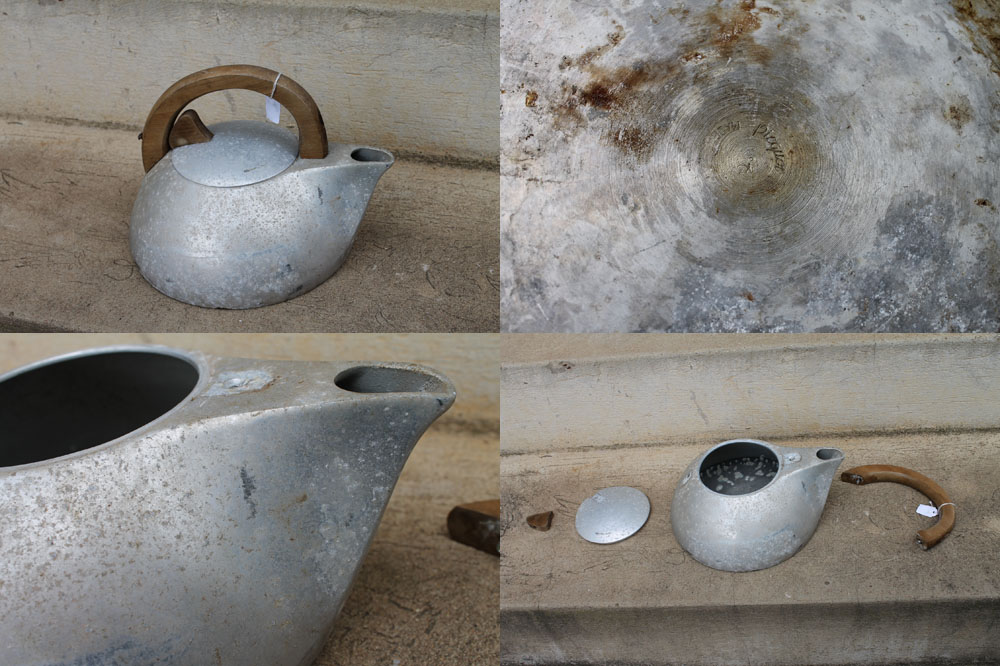Following on from my previous post and with the handle screws both removed it was time to get down to the nitty gritty and see what I could do with the finish of the kettle.
From looking around online I noticed that most, if not all of the Picquot ware kettles had a great, polished, highly reflective mirror finish. This is obviously achieved by a lot elbow grease and polishing. Now, an issue with my kettle as I briefly touched on in my last post is the corrosion and more so the pitting which is a direct result from living by the sea for decades.

Starting with the lid (the smallest part….LOL) I used a fine (read 600 grit) wet and dry sandpaper but quickly noticed it was not abrasive enough due to the depth of the pitting, so I worked my way down basically to 120 grit and then back up again to finish off with 800 grit wet and dry before using autosol metal polish to achieve a great reflective finish.
As you can see in the photos there still is some pitting to the surface of the lid, and will always be until you really removed a decent amount of material from the surface (perhaps 0.10 – 0.20mm). This is definitely doable, however it will just take a fair………or great deal of time.
With the lid polished I was about to make a start on the body when I came to the realisation that I should leave it possibly as a project for a future owner, plus I really like the contrast between the old, dull and corroded body and the bright, vibrantly restored lid.
Before I reattached the handles I gave them a good oil with some Scandinavian Teak Oil which definitely helped to rejuvenate the tired timber. A little neverseize on the handle screws to try and prevent them from seizing up again and the kettle was back together.
Overall I think the kettle turned out pretty great. From walking away from it once at a garage sale in a far away coastal town, to it now sitting on display in our kitchen this piece will be sure to hang around another 50+ years.

